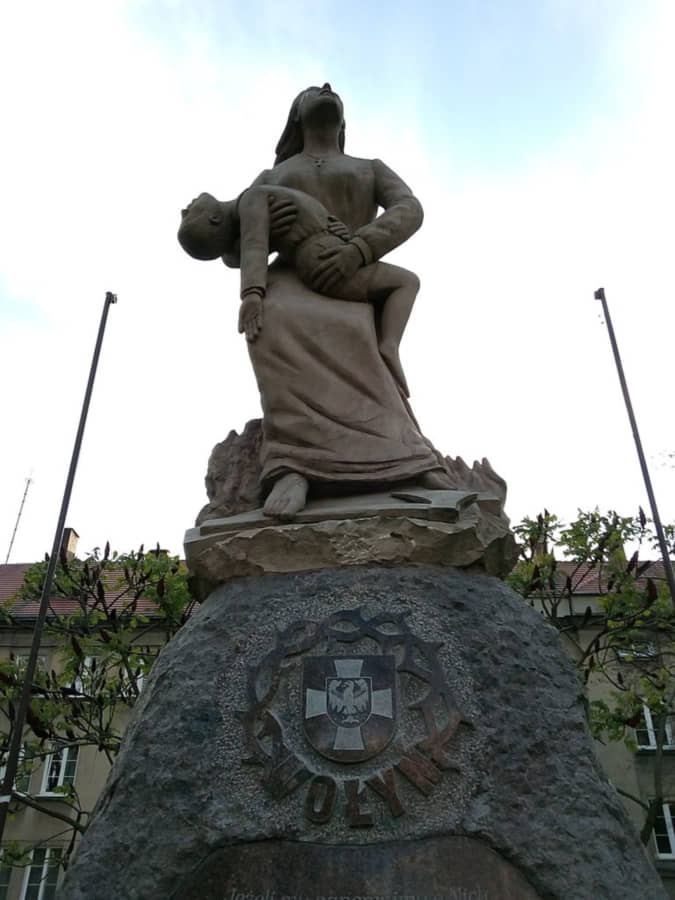Of all the volatile issues emanating from Ukraine’s participation in the Second World War, perhaps the most debated has been Ukrainian Insurgent Army’s (UPA) conflict with the Poles, which has been described by Yale historian Timothy Snyder as one of the earliest examples of ethnic cleansing in the 20th century. A landmark of sorts was reached in 2003, the 60th anniversary of the attempted elimination of the Polish population in Volhynia region, when scholars, writers, and journalists on both sides of the border discussed the matter openly, albeit without reaching any firm conclusions. On the level of government politicians, the then opposition leader, Viktor Yushchenko, made some conciliatory remarks to the Poles concerning responsibility for past events. The Ukrainian response at the grassroots level, from those generally sympathetic to the UPA at least, was that there were similar atrocities on both sides, as evidenced by the enforced deportations of populations from both sides of the border and the deliberate targeting of Ukrainian civilians in Operation Vistula.
The discussion differs from the previous ones that have been analyzed in that it has taken on an international hue, with Ukrainians, for the most part, defending the actions of the insurgents against criticism from outsiders. However, while Soviet propaganda prevailed, the Polish question left the UPA vulnerable to attacks from the official media as well. Because of the controversial nature of these events it is logical to reflect first on the existing English versions of the events that are based on careful archival research.
Snyder has noted that in 1939, the Polish population constituted about 16% of the overall population of Volhynia (Volyn and Rivne oblasts), and by 1943 it had decreased to about 8%. He maintains that the UPA mounted a campaign to identify the Volhynian Poles and the Polish government with the occupation regimes of the Soviet Union and Nazi Germany. He believes that the fury of the actions against the Polish population was the reason for the Polish retaliation against Ukrainians—reflected, for example, in Operation Vistula. They then provided the UPA with an excuse for introducing what Snyder calls “ethnic cleansing” in the territories of Halychyna to the south. However, Poles there were more numerous and better able to defend themselves.
In a related article, Snyder delves into the topic in more detail. In his view, the brutal operations of the Germans against Volhynian Jews provided training for many of the future UPA members for the 1943 actions against Poles. Ukrainians became familiar with violent death on a mass scale, and those who took part in German operations as auxiliary forces subsequently became the main recruits for the creation of the UPA in Volhynia by the OUN-B. The decision to take the latter action was taken following the German defeat at Stalingrad, when in April 1943 OUN SD (Ukrainian Nationalist Organization) leader Mykola Lebed’ proposed to eliminate the entire Polish population in the area of the UPA forces.
Poles were also under intense pressure from Soviet Partisans. Snyder describes members of the OUN-B security forces as extremists and fanatics, with an implacable hatred of people they considered to be enemies of the nation. Thus the Ukrainian political scene in Volhynia came under the domination of “immature and angry men” led by the 33-year-old Lebed’ and practically the entire Ukrainian youth entered the ranks of the UPA (in part, the OUN-B achieved full membership by threatening to kill all those who remained in the service of the Germans). By removing the Poles, they could prevent any possibility of a return to Polish rule in this territory of northwestern Ukraine, and up to 60,000 Poles, mainly civilians, fell victim to this orgy of violence.
**
Wiktor Poliszczuk’s work is an indictment of the OUN and UPA, and who stresses that, in the spring of 1943, Mykola Lebed’, the head of the OUN-B Provid, along with Shukhevych, carried out the proclamation of the First Congress of the OUN by massacring the Polish civilian population of Volhynia. Up to that time, the deaths of Poles at the hands of Ukrainians had been somewhat random and a result of personal animosities. He notes that in this period, the OUN-B demanded of the Ukrainian police still in the service of the Germans that they flee to the forests taking their weapons with them. Former members of the Schutzmannschaften Battalion 201 arrived in Volhynia from Belarus, having completed the brutal pacification of Belarusian villages on behalf of the Germans. These men, he adds, in a similar vein to Snyder’s account, had experience with the elimination of the Jewish population and were now to make up the foundation of the military forces of the OUN-B, along with the Security Service run by Lebed’. Most of the latter forces were made up of Ukrainians from Halychyna.
Using the basis of the First OUN Congress and the Second OUN Conference, it was Lebed’ who provided the instruction to the troops to undertake the systematic extermination of the Polish population of Volhynia. The deaths ran into the tens of thousands, he writes. Members of the Mel’nyk wing of the OUN, where present, were coerced into the same activity. The picture portrayed is one of ruthless ethnic cleansing led by the nationalist security units that had received training at the German political school in Zakopane in 1939–40…. all those dealing with the OUN-UPA as warriors for an independent Ukraine (particularly those who allege that the two organizations had taken on a more moderate and democratic complexion by 1943), have to come to terms with the events of Volhynia, which appear to contradict such an assessment.
David R. Marples is a Distinguished University Professor of Russian and East European History, University of Alberta. He is the author of sixteen single-authored books, including Understanding Ukraine and Belarus (2020), and Heroes and Villains: Creating National History in Contemporary Ukraine (2008), from which this passage is excerpted.
